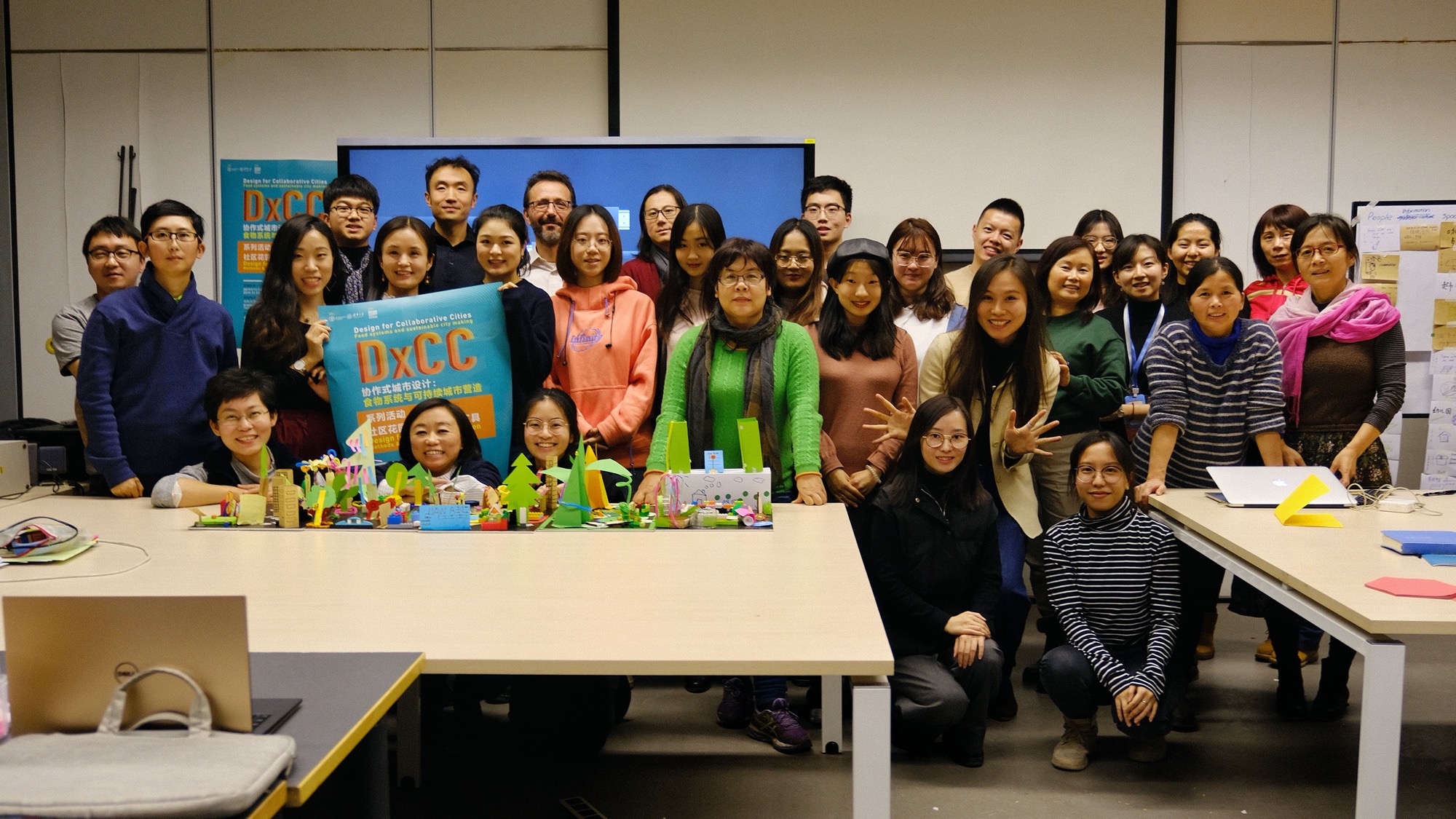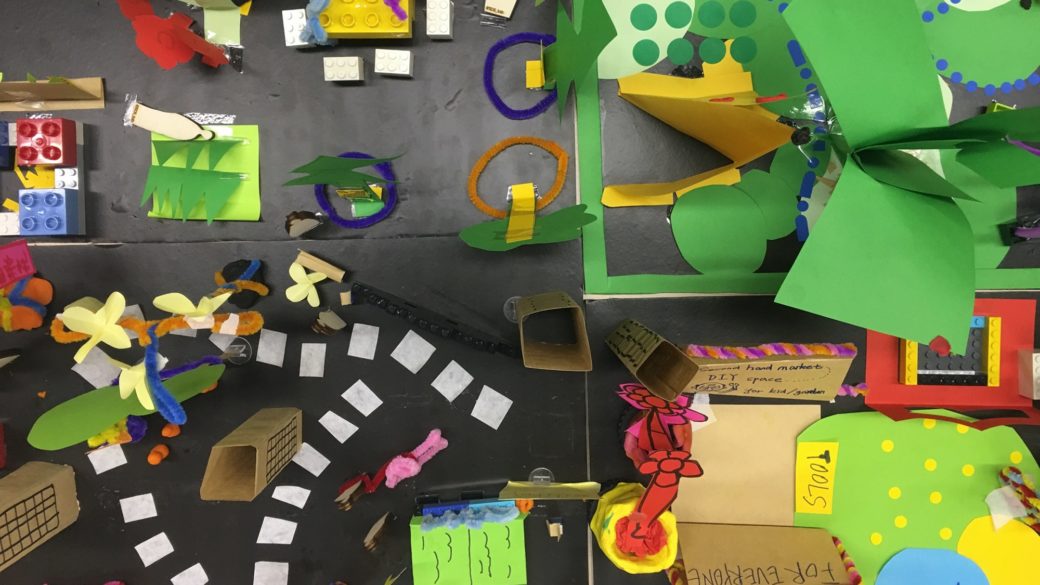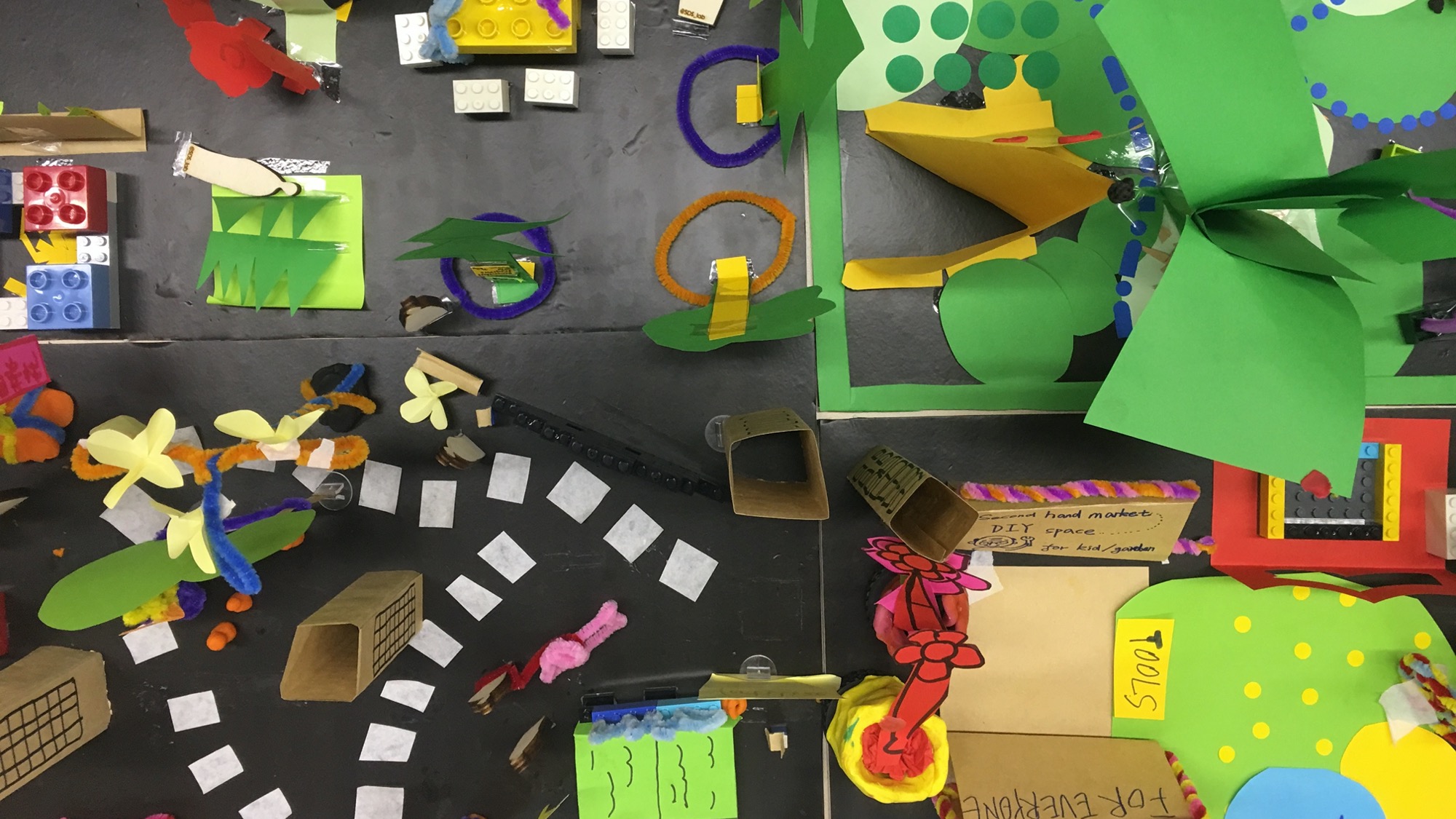
François Jégou, Strategic Design Scenarios, November 2019
(Version française à la suite)
« We community collaborators have many ideas, but they are like a cloud. During these two days of work with the design students, the cloud turns into rain, the drops gather, flow and become reality… » Wei Xie concludes in front of the camera. On the table, a funny model of all the colours has just been reviewed in 25 points: greenhouse shack, irrigation game, dog poo composter, cooking school, miniature canteen, etc. The wall on the right of Wei Xie is covered with small papers that list the assets of the people who live in the large areas of northeast Beijing. The scene takes place on the 4th floor of the Tsinghua University Academy of Art and Design on a Sunday in late November afternoon.
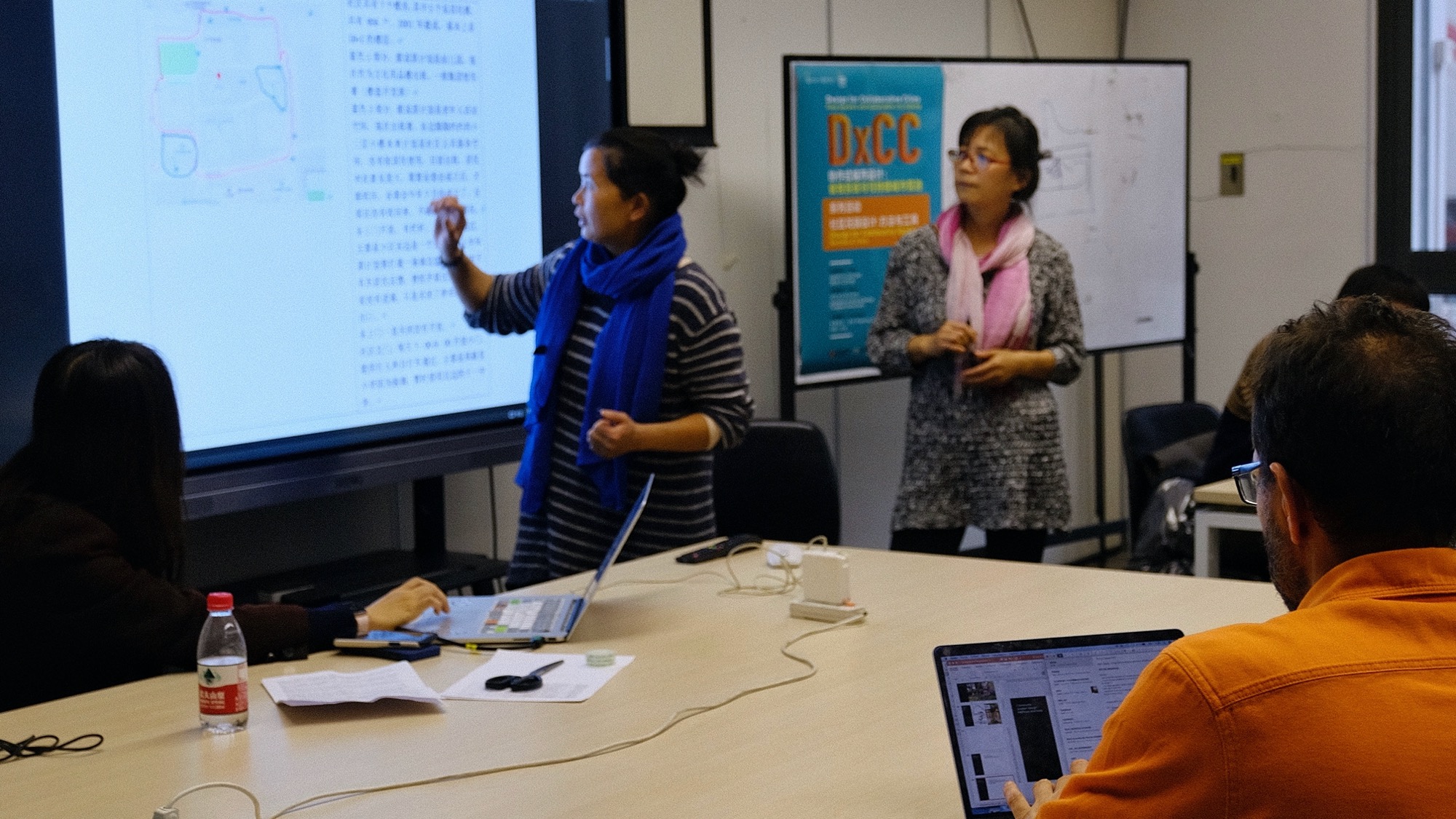
“NON-PLACES” AT THE BOTTOM OF BUILDINGS
« In the community where my family lives, 4500 people live in 1796 apartments divided into 19 6-storey blocks and 3 high rises, says Long Li. Between the buildings there are green spaces, but nobody does anything about them!”. And the other community collaborators present, list the many problems around these so-called green spaces at the bottom of buildings: parking on the flower beds; garbage bins in plant bins; animal waste; abusive privatisations of green space by families living on the ground floor; general lack of maintenance of the plantations; wasteland plots left abandoned; etc.
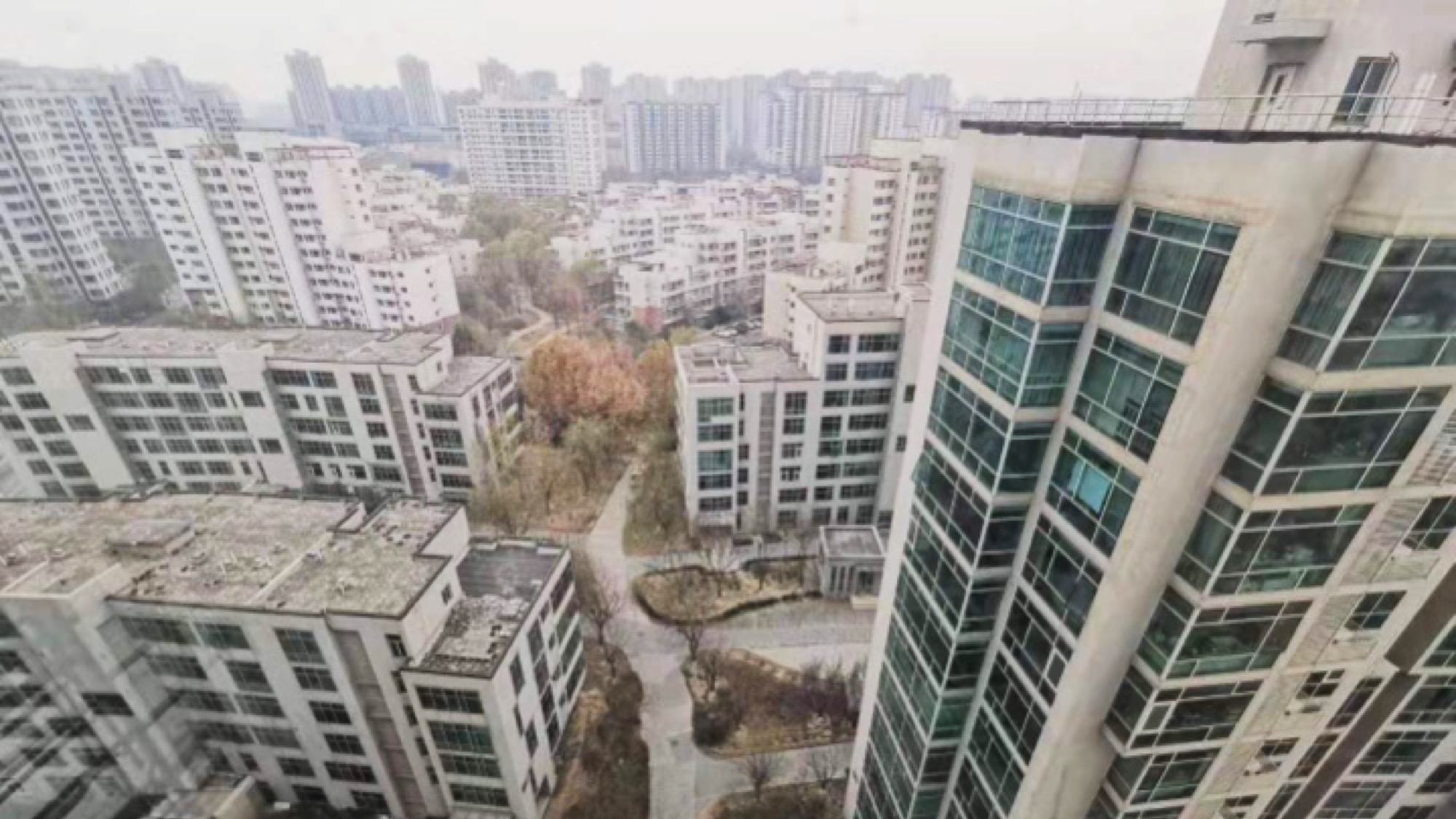
If the very high population density in these large areas does not facilitate living together, it is above all the lack of meaning for the users of « decorative » green spaces that is called into question here. The greening of the bottom of buildings is part of the practices of architects and developers and also of the implicit expectations of the inhabitants. On a daily basis, these consensual green spaces are unsuitable for the use that the inhabitants could make of them. « Children can’t play on it, the elderly can’t sit in the shade and chat or play chess, » confirms Shunqui Hi, community collaborators from Evergreen Centre for Sustainable Development, Xicheng District, Beijing. These green spaces are « non-places » in Marc Augé’s sense, that is, interchangeable spaces that human beings consume because they do not manage to appropriate them.
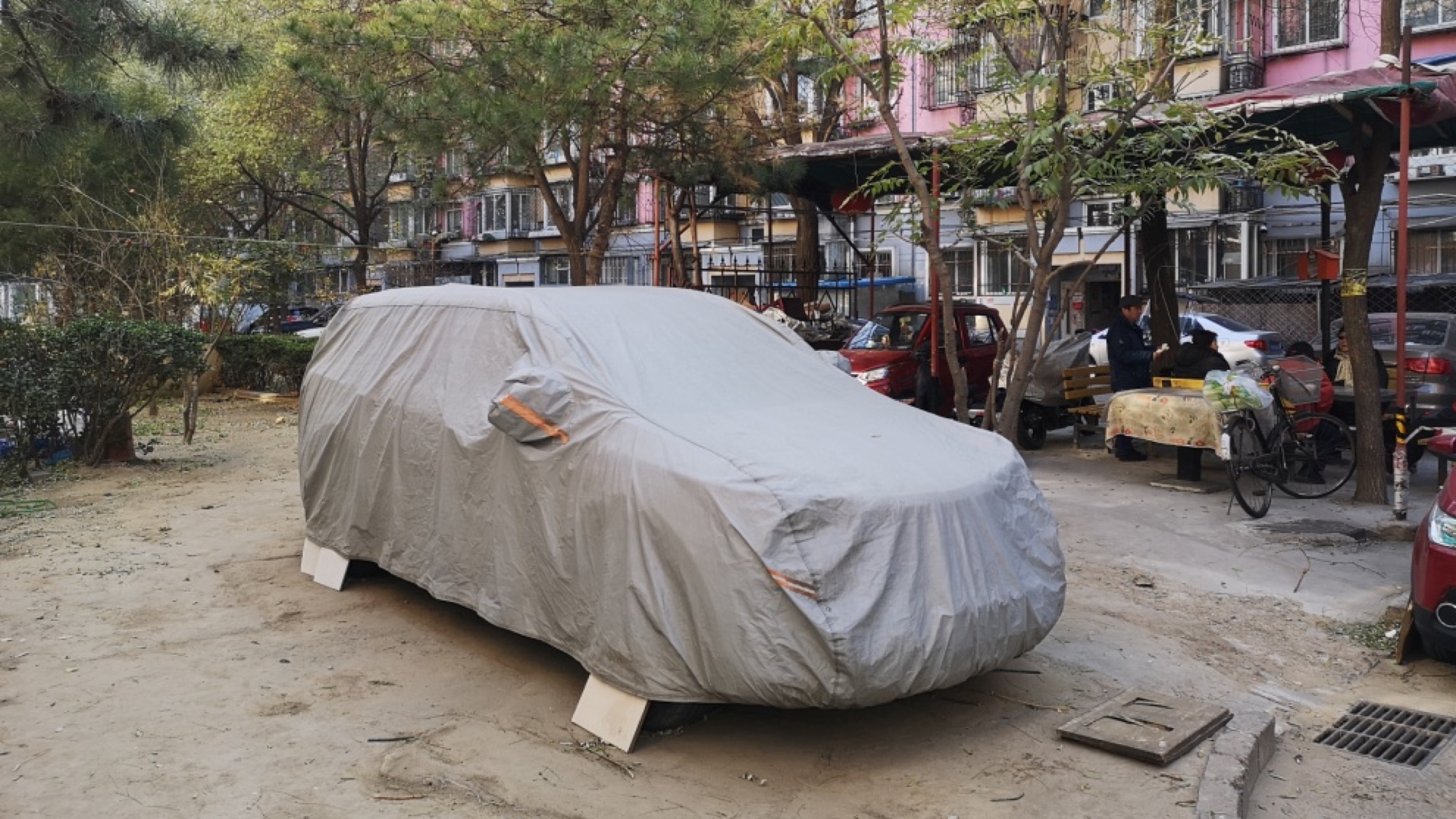
AROUND PROBLEMS RATHER THAN FACE THEM HEAD-ON
Wei Xie, Yankee Liu, Ling Li, Shunqui Hi, etc. are part of a group of 25 community collaborators and design students who participate in a 2-day workshop on the theme of “collective vegetable gardens as a tool for activating social links between the inhabitants of large cities”. Professor Zhong Fang, who invited me to design and lead this workshop, has been working for nearly 10 years to introduce the topic of food in the design department of Tsinghua University in Beijing. If Fang and I are convinced of urban agriculture in all its forms and of its potential as a vector of social cohesion in neighbourhoods because we have seen it all over the world, the challenge here is significant: the 10 areas mentioned by community collaborators as the starting point for the workshop are emblematic of the highest urban densities in the cities of Beijing and Tianjin. In terms of population, the land potentially available at the bottom of the buildings represents an average of ten to fifteen people for each square metre, therefore in terms of vegetable gardens, a rather limited prospect. And this is without counting the problems between neighbours, which are not without reminding us, as Pierre Desproges humorously said, that « the neighbour is a harmful species quite close to man ». If the Chinese formula for referring to all the inhabitants of the same complex of buildings is to talk about a « community of inhabitants », life in these large complexes of skyscrapers does not seem to be a matter for the community. « We don’t share much except the memory that the neighbours formed before an urban community » confirms Yi Liu, co-organizer of the workshop, who came a year ago from ZhenZhou in central China to start a doctorate in Beijing and who plans to settle elsewhere where the climate is better afterwards.
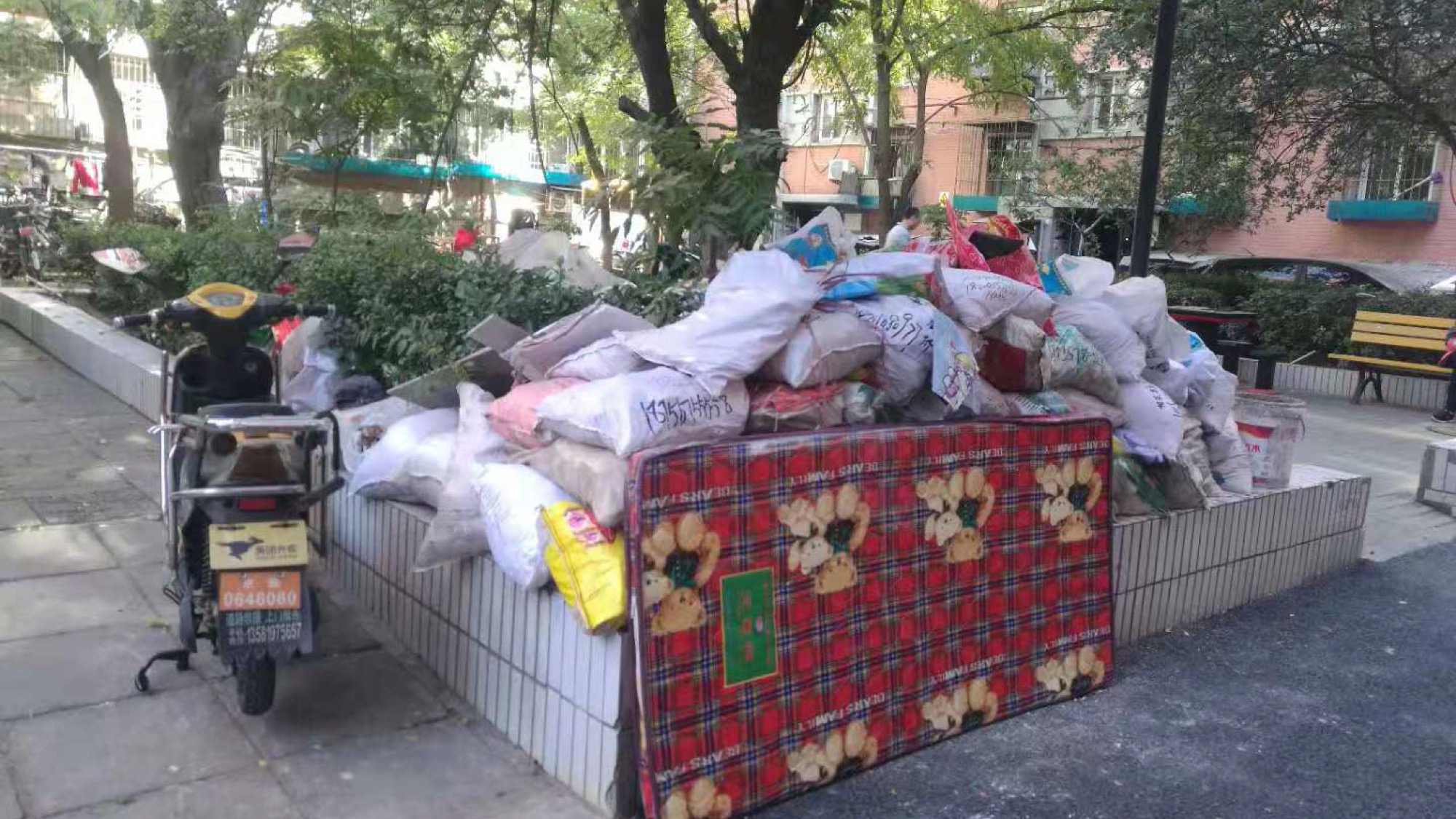
It is not easy to build from so many problems and so few opportunities. In organizing the workshop with Fang and Yi, it seems important to me to change the perspective and to engage all participants to look for the assets and not only the problems that these communities of inhabitants could have around urban gardening and, in general, growing fruit and vegetable in the city. In the same way as approaches based on the search for positive points such as the ABCD (Asset Based Community Development) method, the idea is to make a localized inventory of the civic skills of a neighbourhood or a social group and all the other assets present in the surrounding system. The method, in its literal approach, facilitates the emergence of links between individuals and collective initiatives in their different contexts. Here, taken as a state of mind for the workshop, it makes it possible to have a more constructive approach and to make a detour that is often necessary to get out of the risk of being trapped in the treatment of problems stricto-sensu, to take into consideration the assets that motivate the populations concerned and on which to leverage indirectly to return to the initial problems. For example, the presence of young children is central to their families. They are a motivation to provide healthy food education, practical nature teaching, reconnecting with plants, generating a sense of community, etc. « My children were born in Beijing says Wei Xie, and they have no idea what it’s like to live in a neighbourhood, to enjoy the common spaces, to share with neighbours!”.
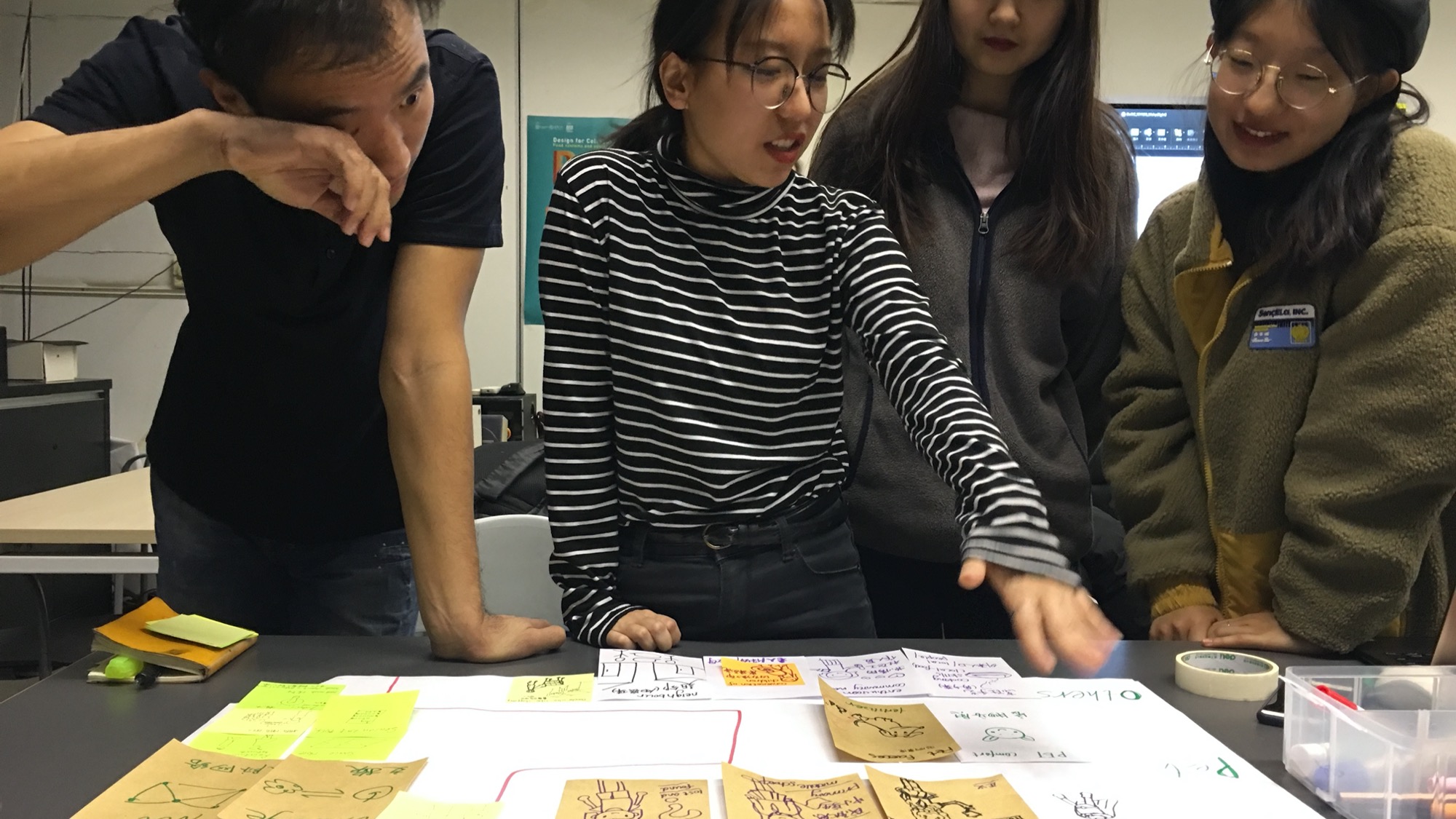
The group identifies multiple indirect assets on which to rebuild the collective through urban gardening: elderly people who have time to care for plants; indigenous gardening knowledge, vegetable and culinary talents from different parts of China, etc. Beyond people there are also material goods to value: seeds to exchange, gardening tools to share, flowerpots to fill, and even vegetable peels and dog droppings to compost…
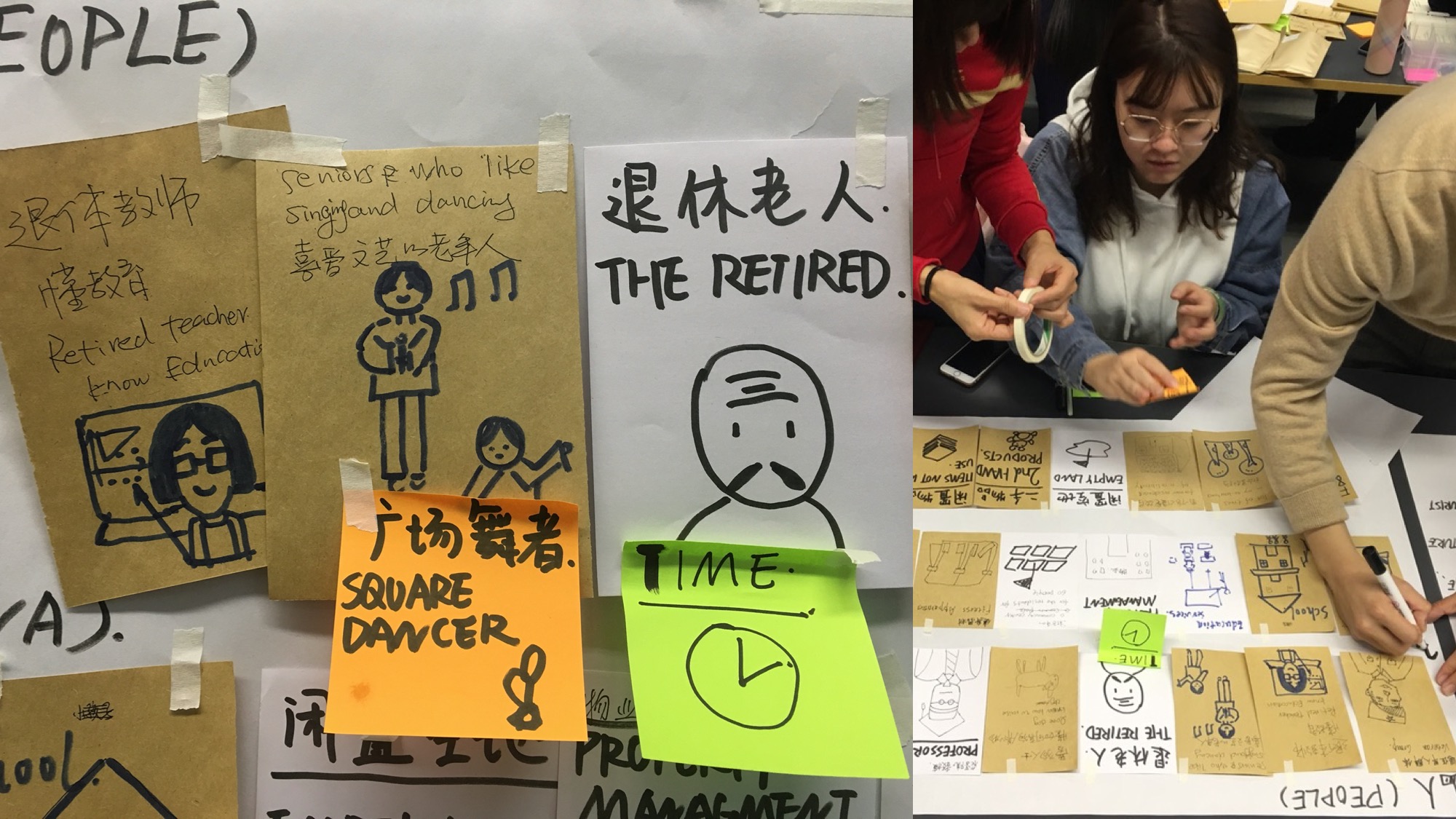
Finally, participants list assets in the cultural capital such as a calendar of seasons well anchored in everyday life, punctuated by annual festivals, customs related to plantations, harvests, etc. with their corollary of culinary specialities.
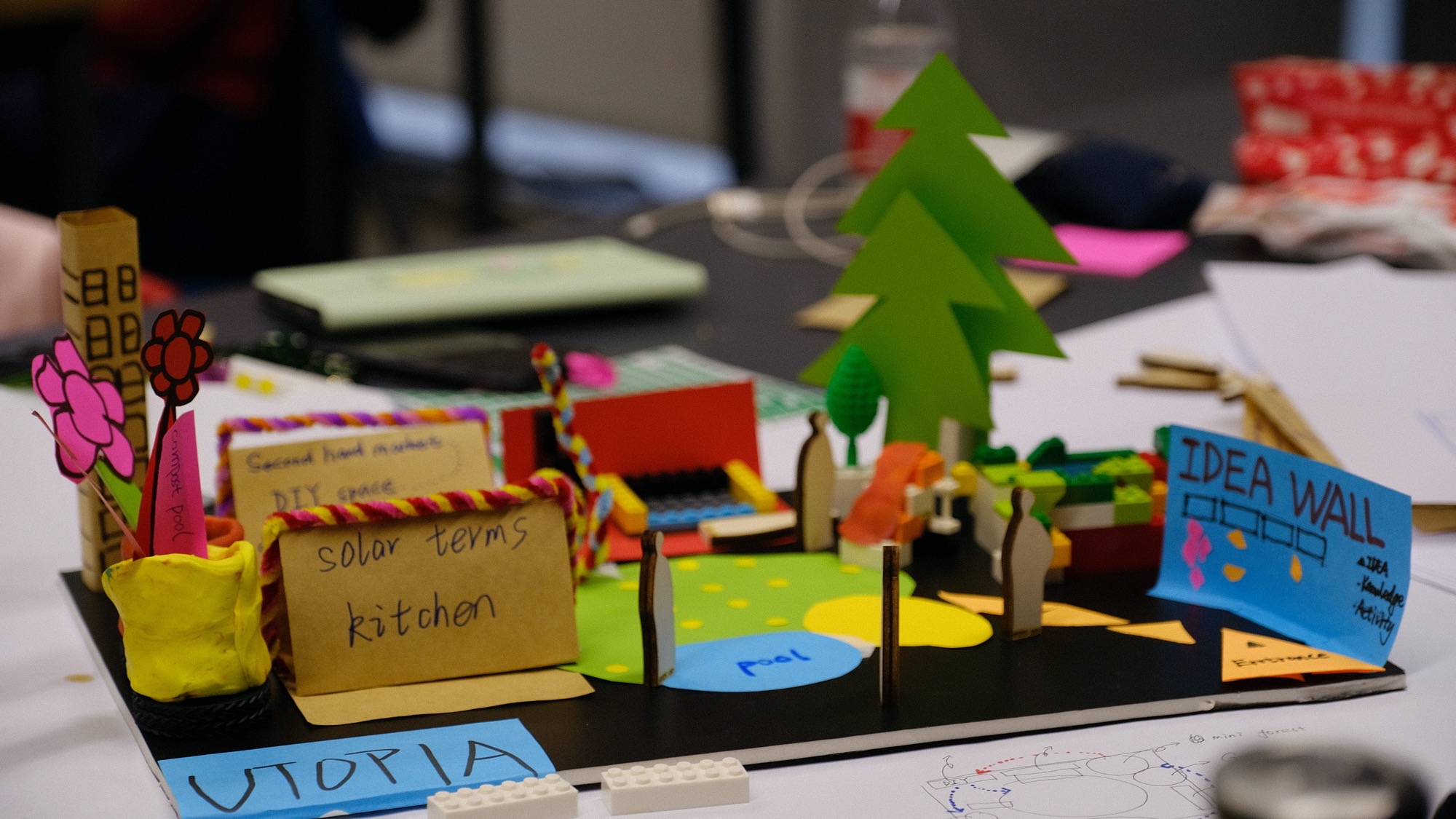
BE INSPIRED BY EUROPEAN CITIES AND URBACT NETWORKS?
Can we inspire the protagonists gathered here with the dynamics of urban agriculture and collective gardening in European neighbourhoods? The title bears a question mark: the cases of good practices that I have brought have been collected by working with the city exchange networks within the URBACT programmes[1] and it is not said that they can be activated on the scale of the large Chinese megacities. Pré Senty, a collective vegetable garden at the bottom of social housing in the 8th arrondissement in Lyon, France, shows that social inclusion can be generated with very small plots of land: around twenty gardeners grow pumpkins and 4 times a year a collective soup is organised for all the inhabitants of the surrounding apartment towers. The « Self maintenance contracts » for public green spaces by the inhabitants of Amersfoort in the Netherlands resonate with the appropriation of the green space by ground floor tenants: the abusive use of public property can become a proven strategy for the maintenance of green spaces by residents. Last but not least, the greening of tree feet by children in the Molenbeek district of Brussels and all symbolic or educational micro-gardening initiatives involving children from families living in the surrounding vertical dwellings are particularly aligned with the concerns of the communities of inhabitants of the major cities of Beijing and Tianjin. After the presentation of 20 of such examples collected from URBACT networks cities, the transfer process can start. The workshop participants smile and start talking to each other as they begin to build their mock-upl. No more English translation for me, they « think with their hands » and on the tables the projects start to develop…
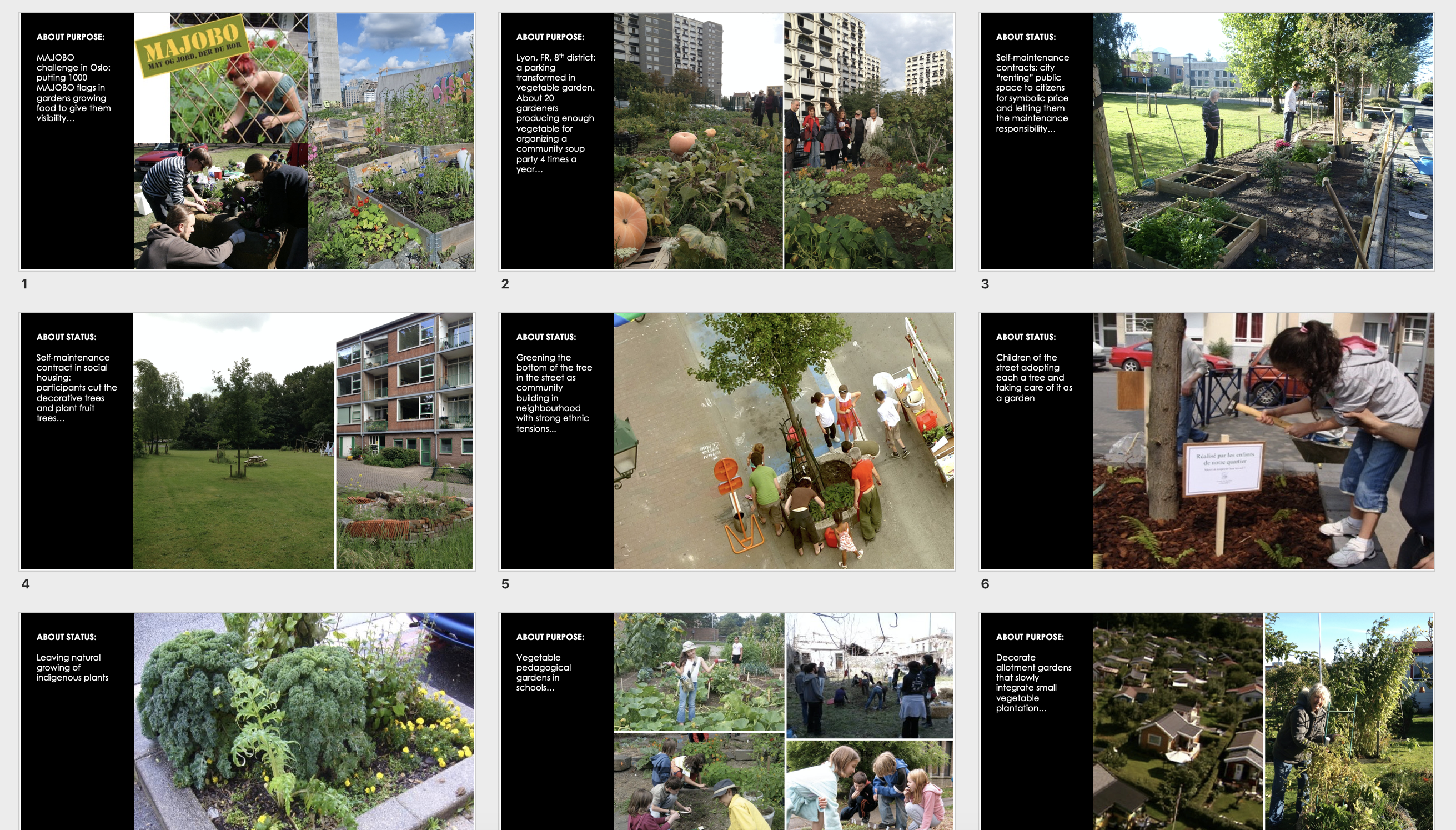
[1] See for instance URBACT II, Sustainable Food in Urban Communities : Jégou, F., Carey, J. 2015. Handbook, Creating Space for Sustainable Food System in Urban Communities, Practical approaches and examples for cities, Strategic Design Scenarios Publishing, Brussels http://www.strategicdesignscenarios.net/creating-space-for-sustainable-food-systems-in-urban-communities/
UTOPANG TOOLBOX
This workshop follows a conference organized by Tsinghua University and entitled: Food systems and city making or in other words how the construction of cities through the involvement of citizens and the synergies between neighbourhood initiatives such as the constitution of collective vegetable gardens that we have just discussed here, can contribute to the transition towards a more sustainable and equitable organization of food production, distribution and consumption in the territory? This event organized in November 2019 in Beijing is part of a series of events on Design for the Collaborative City organized by DESIS, the international network of schools and universities on Design for Social Innovation and Sustainability, starting in Shanghai at the end of 2018, then in Barcelona, Bogota, Beijing, Bangkok, Rome and finally in Lille in the autumn of 2020 on the occasion of Lille 2020 World Capital of Design.
Here Sunday evening, it’s the end of the workshop. The sunlight is declining at Tsinghua University and the participants are tired of this weekend’s work but happy with the outcomes. « This is a good result achieved in such a short time » for Professor Xin Liu, who came to attend the final presentation of the workshop. A single large conceptual model integrates 5 points put forward by each of the 5 working groups, therefore a palette of 25 project sketches to start vegetable gardens in the Chinese capital.
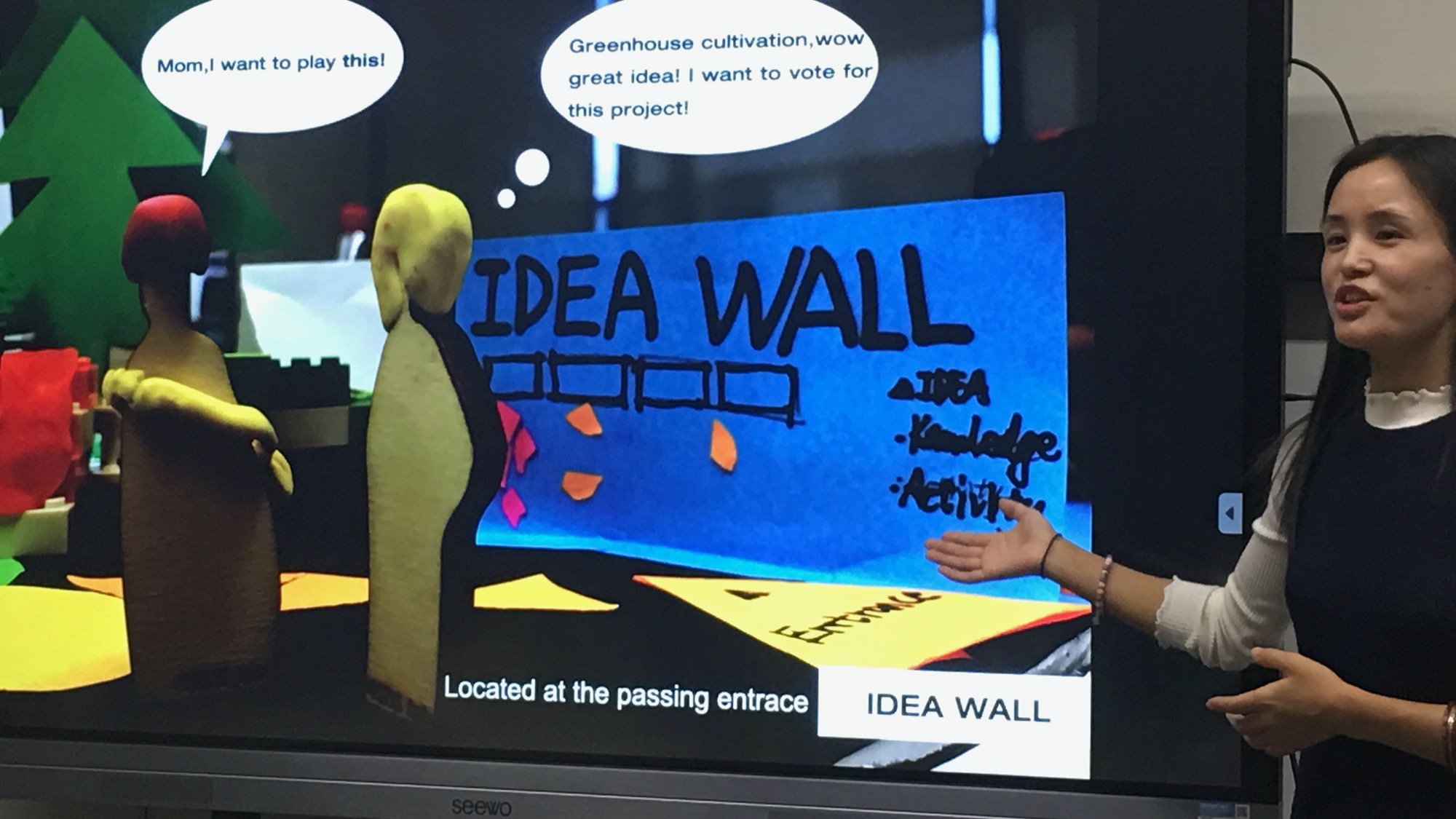
Among the strategies proposed to solve the squaring of the circle between very high population concentrations and limited green spaces available in large building complexes, many revolve around children and the design of garden games: mini farms, small greenhouse villages, irrigation systems with bamboo gutters, educational compost, seasonal calendar wheels, fruit trees labelled with children’s poems, cooking workshops for children and canteen service for parents… The educational focus makes it possible to play on a sensitive string and engage families more easily, ensure everyone’s kindness but also to satisfy more households with very small vegetable gardens.
Many obstacles still remain to be overcome, such as the shade of skyscrapers, which leaves little sunlight for growing vegetables, or the presence of a park or public garden in the neighbourhood, which will attract many families to the detriment of involvement in gardening at the bottom of buildings.
« But then, asks Jianghong Liu, are there any other workshops planned, how are we progressing with all this?”. The collective model is designed as a tool for community collaborators. It is presented as a palette of possibilities sufficiently defined to be considered credible and inspire communities of inhabitants but also, sufficiently open to engage in a real co-design process, experiment in the field and precisely define vegetable garden or gardening solutions resulting from the specificities of each context.
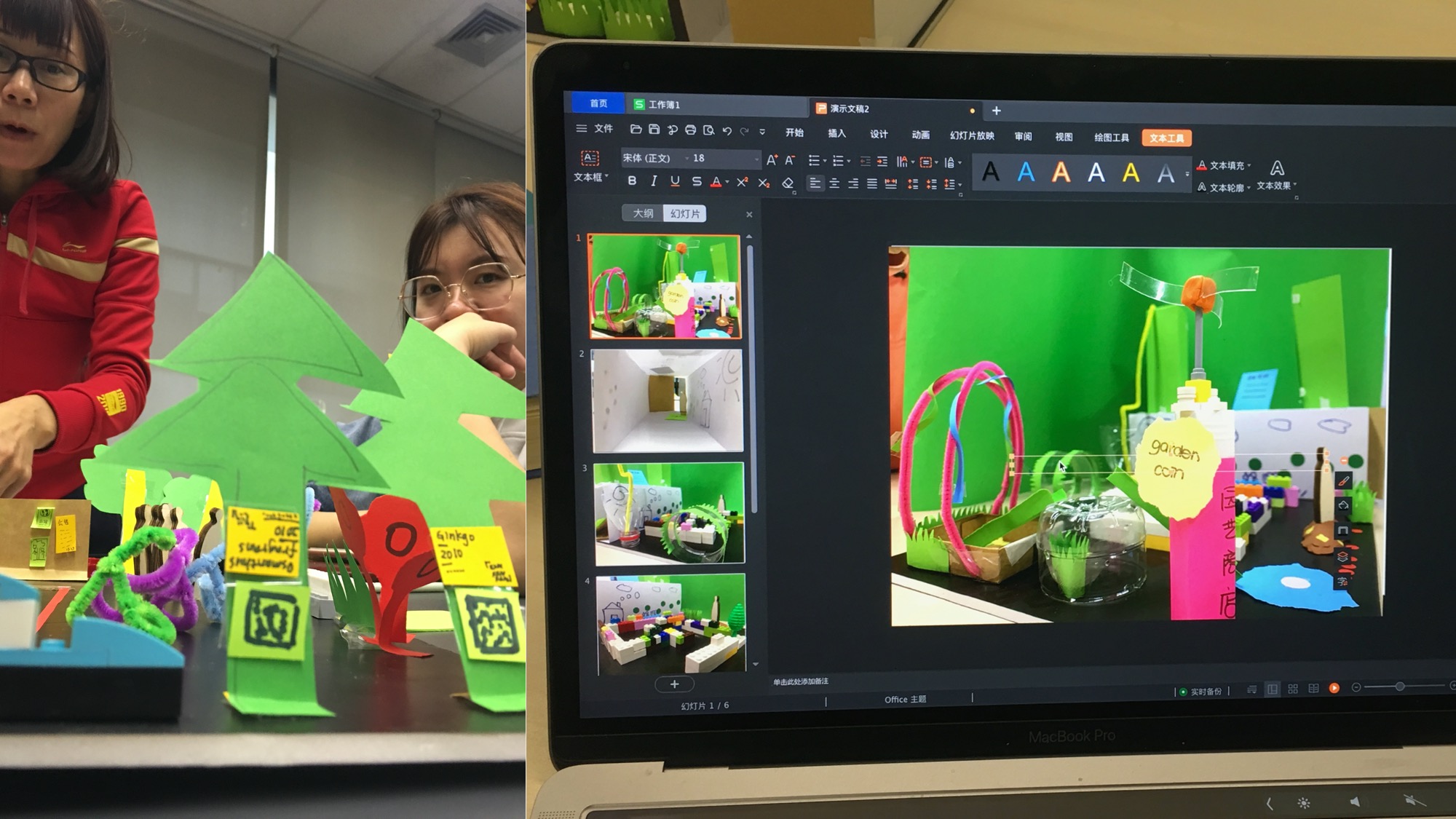
CONNECTING THE DROPS!
Yi Liu, as co-organizer of the workshop, spontaneously states: « Before I hated workshops of this kind. I worked for an agency that sold design thinking: workshops were organized to give the impression to clients that they were participating but everything was already defined in advance and everything that had been done during the workshop was thrown away as soon as the client left!”.
The community collaborators, invited to give the final word on what they bring home as a kind of workshop beneficiaries: « the result feeds our needs as community”; « I retain the constructive method based on assets »; « we can work with children in the same way and design projects that will be more likely to last »; etc.
The participants named the entire outcomes model « Utopang » or something like: « the garden of utopias ». Let’s hope with Wei Xie and his poetic way to say it, that this drop of water will flow to meet others and fertilize a little the mineral capital of China!
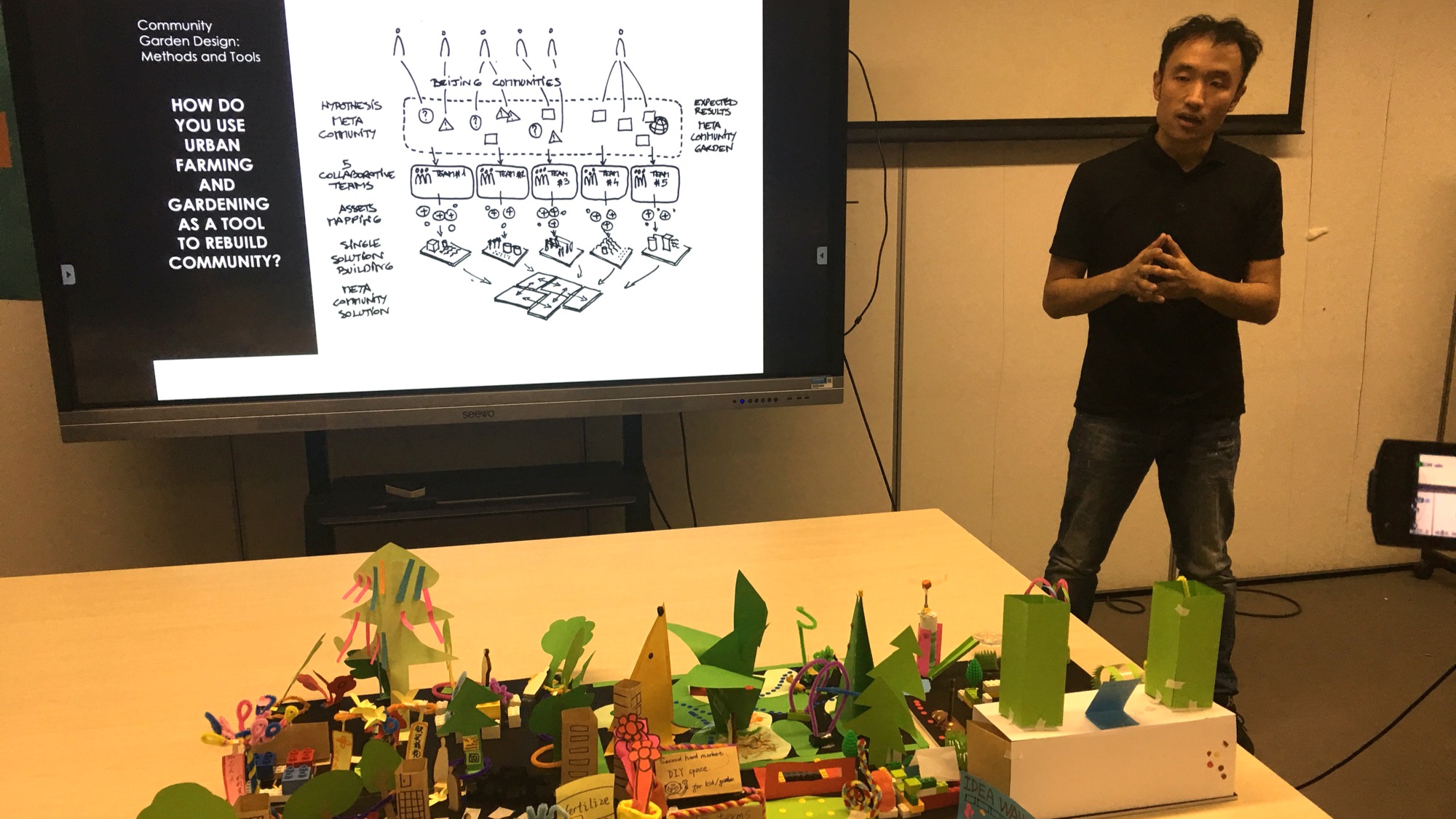
UTOPANG, UNE GOUTTE D’EAU A BEIJING !
François Jégou, Strategic Design Scenarios, Novembre 2019
(English version before)
« Nous les médiateurs sociaux, nous avons pleins d’idées mais elles sont comme un nuage. Pendant ces deux jours de travail avec les étudiants en design, le nuage se transforme en pluie, les gouttes se rassemblent, coulent et deviennent réalité » conclue Wei Xie devant la caméra. Sur la table une drôle de maquette de toutes les couleurs vient d’être passée en revue en 25 points : serre-cabane, jeu d’irrigation, composteur à crottes de chien, cuisine-école, cantine miniature, etc. Le mur à la droite de Wei Xie est couvert de petits papiers qui inventorient les atouts des populations qui habitent dans les grands ensembles des quartiers nord-est de Beijing. La scène se passe au 4ème étage de l’académie d’Art et Design de l’Université de Tsinghua un dimanche de novembre en fin d’après-midi.

DES « NON-LIEUX » EN PIEDS D’IMMEUBLES
« Dans la communauté où habite ma famille vivent 4500 personnes dans 1796 appartements répartis 19 blocs de 6 étages et 3 tours, déclare Long Li. Entre les immeubles il y a des espaces verts mais dont personne n’en fait rien ! ». Et les autres médiateurs sociaux présents listent les multiples problèmes autour de ces prétendus espaces verts en pied d’immeubles : parkings sur les platebandes ; entrepôts des poubelles dans les bacs à plantes ; déjections animales ; privatisations abusives par les familles des rez-de-chaussée ; manque général d’entretien des plantations ; parcelles en friches laissées à l’abandon ; etc.
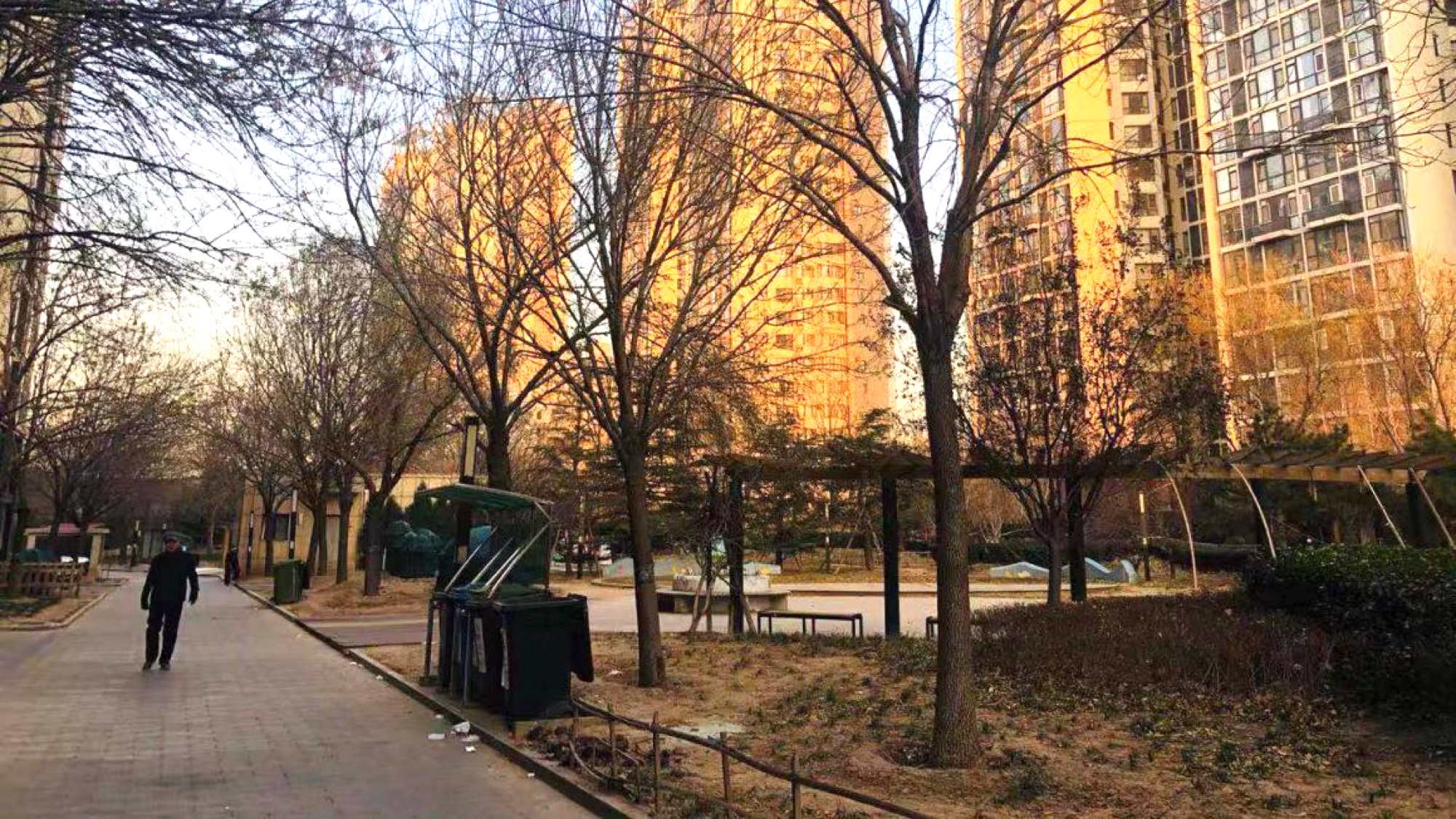
Si la très haute densité de population dans ces grands ensembles ne facilite pas le vivre ensemble, c’est surtout le manque de sens pour les usagers des espaces verts « décoratifs » qui est remis ici en cause. La verdurisation des pieds d’immeubles fait partie des pratiques des architectes et des promoteurs et aussi des attentes implicites des habitants. Au quotidien, ces espaces verts consensuels sont impropres à l’usage que pourraient en faire les habitants. « Les enfants ne peuvent pas y jouer, les âgés ne peuvent pas s’assoir à l’ombre pour bavarder ou jouer aux échecs » confirme Shunqui Hi médiateur social du Centre pour le Développement Drable Evergreen, du quartier de Xicheng à Beijing. Ces espaces verts sont des « non-lieux » au sens de Marc Augé, soit des espaces interchangeables que les êtres humains consomment parce qu’ils ne parviennent pas à se les approprier.
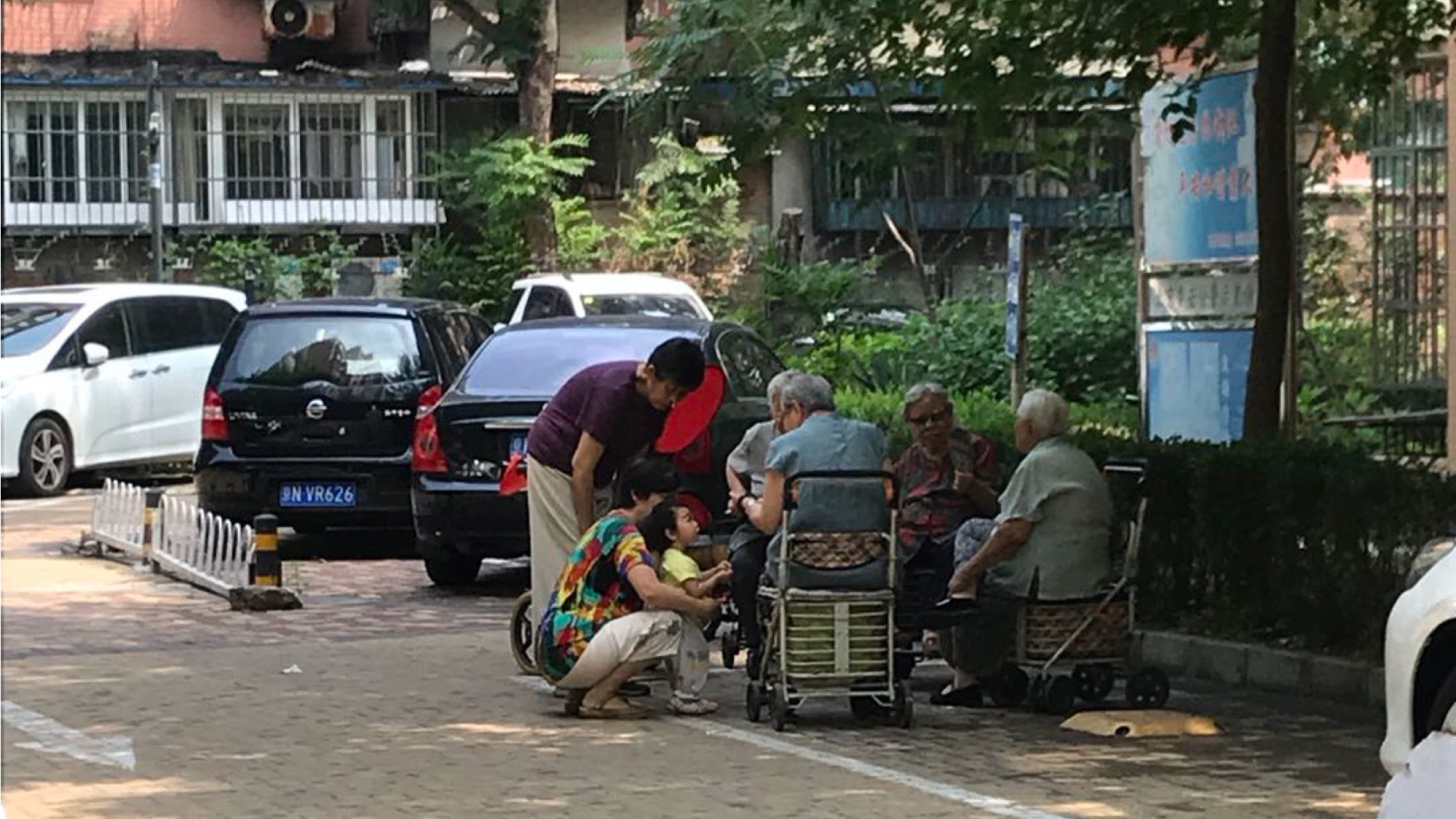
CONTOURNER LES PROBLÈMES PLUTOT QUE LES AFFRONTER DE FACE
Wei Xie, Yankee Liu, Ling Li, Shunqui Hi, etc. font partie d’un groupe de 25 médiateurs sociaux et étudiants en design qui participent à 2 jours d’atelier sur la thématique des potagers collectifs comme outil d’activation des liens sociaux entre les habitants des grandes villes. La Professeure Zhong Fang qui m’a invité à concevoir et guider cet atelier, travaille depuis près de 10 ans sur le sujet au sein de département de design de la grande université Tsinghua à Beijing. Si Fang et moi-même sommes convaincu de l’agriculture urbaine sous toutes ses formes et de son potentiel comme vecteur du lien social dans les quartiers pour l’avoir constaté partout dans le monde, le défi est ici de taille : les 10 terrains dont font état les médiateurs sociaux comme point de départ de l’atelier sont emblématiques des plus hautes densités urbaines des villes de Beijing et Tianjin. Ramenés au nombre d’habitants les terrains potentiellement disponibles en bas des immeubles représentent en moyenne dix à quinze personnes pour chaque mètre carré soit en termes de potager, des perspectives plutôt limitées. Et ceci sans compter les griefs réciproques entre voisins qui ne sont pas sans rappeler comme le disait avec humour Pierre Desproges, que « le voisin est une espèce nuisible assez proche de l’homme ». Si la formule consacrée en Chine pour désigner l’ensemble des habitants d’un même ensemble d’immeubles et de parler d’une «communauté d’habitants », la vie dans ces grands ensembles de gratte-ciels ne semble pas relever de la communauté. « Nous ne partageons pas grand-chose si ce n’est le souvenir que les voisins formaient avant une communauté urbaine », confirme Yi Liu co-organisatrice de l’atelier et venue il y a un an de ZhenZhou dans le centre de la Chine pour faire un doctorat à Beijing et qui compte bien repartir s’établir ailleurs où le climat est meilleur après.

On ne construit pas facilement à partir de tant de problèmes et si peu d’opportunités. En organisant le déroulé de l’atelier avec Fang et Yi, il me semble important de changer de perspective et d’engager d’emblée tous les participants à chercher les atouts et non plus les problèmes que ces communautés d’habitants pourraient avoir autour du jardinage urbain et, en général, de la production de fruits et légumes dans la ville. A la manière des approches basées sur la recherche de points positifs comme la méthodes ABCD (Asset Based Community Development), l’idée est de faire un inventaire localisé des compétences citoyennes d’un quartier ou d’un groupe social et de tous les autres atouts présents dans le système environnant. La méthode dans son approche littérale, facilite l’émergence de liens entre individus et les initiatives collectives dans leurs différents contextes. Ici, prise comme état d’esprit pour l’atelier, elle permet d’avoir une approche plus constructive et de faire un détour souvent nécessaire pour se sortir du risque d’enfermement dans le traitement des problèmes stricto-sensu, pour prendre en considération des atouts qui motivent les populations concernées et sur lesquels faire levier indirectement pour revenir sur les problèmes initiaux. Par exemple, la présence jeunes enfants occupent une place centrale dans leurs familles. Ils sont une motivation pour fournir une éducation alimentaire saine, un enseignement pratique de la nature, retrouver un contact avec le végétal, générer un sens de la communauté, etc. « Mes enfants sont nés à Beijing, déclare Wei Xie, et ils ne savent pas du tout ce que c’est de vivre dans un quartier, de profiter des espaces en commun, de partager avec les voisins ! ».
Le groupe identifie de multiples atouts indirects sur lesquels reconstruire du collectif via le jardinage en milieux urbain : des personnes âgées qui ont du temps pour s’occuper de plantes ; des connaissances autochtones en matière de jardinage, des talents potagers et culinaires en provenance de différentes parties de la Chine, etc. Au-delà des personnes il y a aussi des biens matériels à valoriser : des semences à échanger, des outils de jardinages à mettre en commun, des pots de fleurs à remplir, et même des épluchures de légumes et des crottes chien à composter…
Enfin, les participants listent des atouts dans le capital culturel comme un calendrier des saisons bien ancré dans le quotidien ponctué de fêtes annuelles, de coutumes liées aux plantations, aux récoltes, etc. avec leur corollaire de spécialités culinaires.
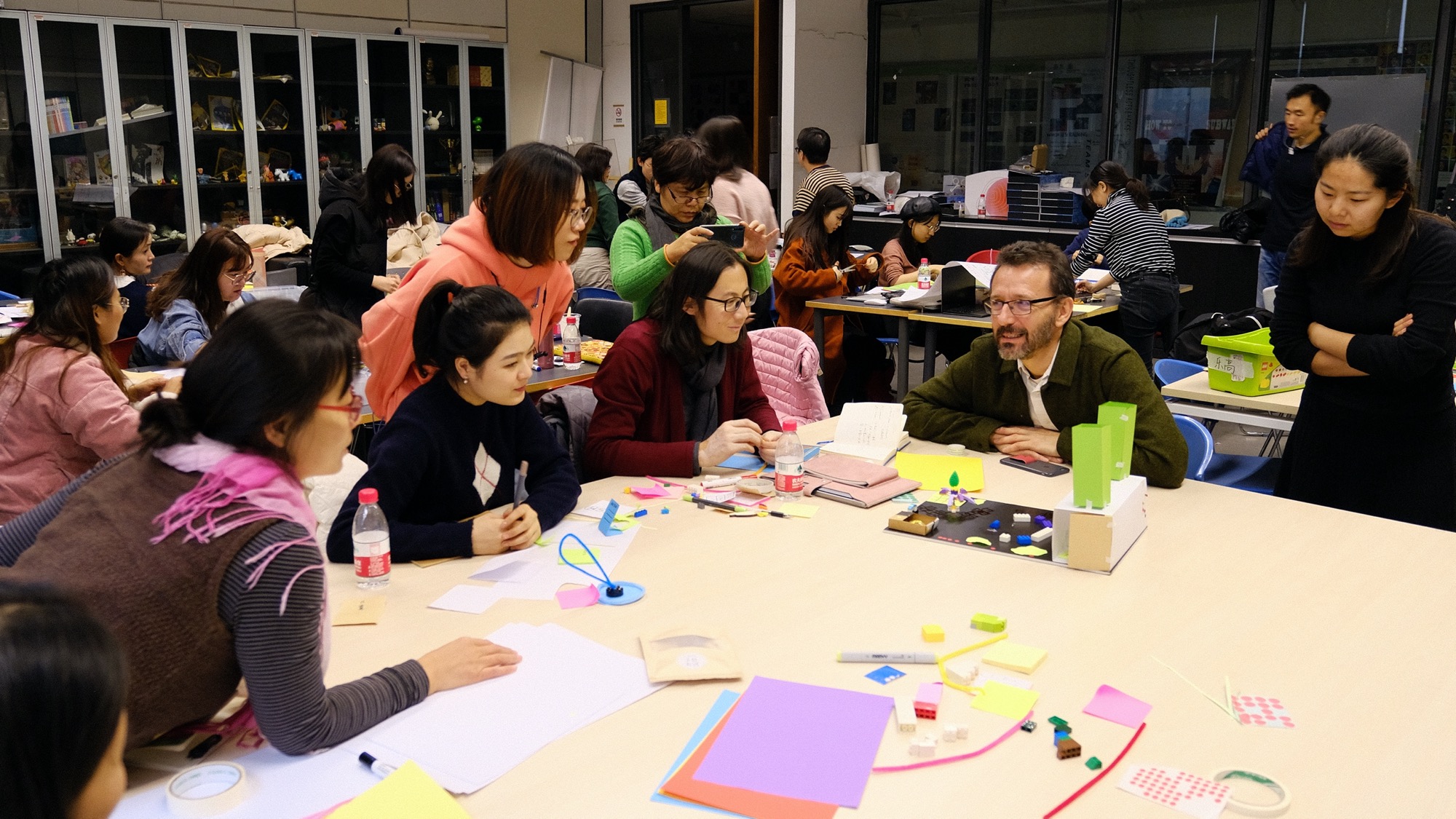
S’INSPIRER DES VILLES EUROPÉENNES DES RÉSEAUX URBACTS ?
Peut-on inspirer les protagonistes réunis ici avec les dynamiques d’agriculture urbaine et de jardinage collectif dans les quartiers en Europe ? Le titre porte un point d’interrogation : les cas de bonnes pratiques que j’ai apportés ont été collectés en travaillant avec les réseaux d’échanges entre ville au sein des programmes URBACT[1] et il n’est pas dit qu’ils soient actionnables à l’échelle des grandes mégalopoles chinoises. Le Pré Senty un potager collectif en pied de logements sociaux dans le 8ème arrondissement à Lyon en France montre que l’on peut générer de l’inclusion sociale avec des très petits terrains : une vingtaine de jardiniers font pousser des potirons et 4 fois par ans une soupe collective est organisée pour tous les habitants des tours environnantes. Les « Contrats d’auto-entretien » des espaces verts publics par les habitants d’Amersfoort aux Pays-Bas résonnent avec l’appropriation des platebandes par les locataires du rez-de-chaussée : l’usage abusif du bien publics peut devenir une stratégie avérée d’entretien des espaces verts par les habitants. Enfin et surtout, la verdurisation des pieds d’arbres par les enfants dans le quartier de Molenbeek à Bruxelles et toutes les initiatives de micro-jardinage symbolique ou pédagogique impliquant les enfants des familles habitant dans les logements verticaux alentours se révèlent particulièrement alignés avec les préoccupations des communautés d’habitants des grands ensembles de Beijing et Tianjin. Après la présentation d’une vingtaine d’exemples de ce type choisis parmi les villes des réseaux URBACT, le transfert commence. Les participants à l’atelier ont le sourire et commencent à discuter entre eux en commençant à construire chacun leur maquette. Plus question de traduction en anglais pour moi, ils « pensent avec les mains » et sur les tables les projets commencent à se développer…

[1] Voir par exemple le réseau URBACT II, Sustainable Food in Urban Communities : Jégou, F., Carey, J. 2015. Handbook, Creating Space for Sustainable Food System in Urban Communities, Practical approaches and examples for cities, Strategic Design Scenarios Publishing, Brussels http://www.strategicdesignscenarios.net/creating-space-for-sustainable-food-systems-in-urban-communities/
UTOPANG TOOLBOX
Cet atelier fait suite à une conférence organisée par l’Université de Tsinghua intitulée : « Systèmes alimentaires et city making » ou autrement dit comment la construction des villes par l’implication des citoyens et la mise en synergies des initiatives de quartier comme la constitution de potager collectifs que nous venons de discuter peut contribuer à la transition vers une organisation de la production, la distribution et la consommation alimentaire plus durable et équitable sur le territoire ? Cette manifestation organisée en novembre 2019 à Pékin s’inscrit dans une suite d’événements sur le Design pour la Ville Collaborativeorganisés par DESIS, le réseau international d’écoles et universités sur le Design pour l’Innovation Sociale et le Développement Soutenable, à Shanghai en fin 2018, puis à Barcelone, Bogota, Beijing, Bangkok, Rome pour terminer à Lille à l’automne 2020 à l’occasion de Lille 2020 Capitale Mondiale du Design.
Ici dimanche soir, c’est le final de l’atelier. Le jour décline sur l’université de Tsinghua et les participants sont fatigués de ce weekend de travail mais contents du résultat. « C’est un bon résultat atteint en si peu de temps » pour le professeur Xin Liu, venu assister à la présentation finale de l’atelier. Une seule grande maquette conceptuelle intègre 5 points mis en avant par chacun des 5 groupes de travail soit une palette de 25 esquisses de projets pour démarrer des jardins potagers dans la capitale Chinoise.

Parmi des stratégies proposées pour résoudre la quadrature du cercle entre très fortes concentrations de population et espaces verts disponibles limités dans les grands ensembles d’immeubles, beaucoup tournent autour des enfants et la conception de jeux de jardinages : mini fermes, village de petites serres, système d’irrigation avec des rigoles en bambous, compost pédagogiques, roue-calendrier des saisons, fruitiers étiquetés par des poèmes d’enfants, ateliers cuisines pour les petits et service cantine pour les parents… Le focus pédagogique permet à la fois de jouer sur une corde sensible et engager plus facilement les familles, s’assurer une bienveillance de tous mais aussi de satisfaire plus de foyers avec des potager de tailles très modestes.
De multiples freins restent encore à lever comme l’ombre des gratte-ciels qui laisse peu de soleil aux légumes ou la présence d’un parc ou d’un jardin public dans le quartier qui remportera l’adhésion de beaucoup de famille au détriment de l’implication dans le jardinage des pieds d’immeubles.
« Mais après, demande Jianghong Liu, est-ce qu’il y a d’autres ateliers de prévu, comment on avance avec tout ça ? ». La maquette collective est pensée comme un outil à l’usage des médiateurs sociaux. Elle se présente comme une palette de possibles suffisamment définis pour être jugés crédibles et inspirer les communautés d’habitants mais aussi, suffisamment ouverts pour engager un véritable processus de co-design, expérimenter sur le terrain et définir précisément des solutions de potagers ou de jardins issus des spécificités de chaque contexte.

RELIER LES GOUTTES !
Yi Liu, qui est aussi la co-organisatrice et la cheville ouvrière de l’atelier déclare spontanément : « Avant je haïssais les ateliers de ce genre. Je travaillais pour une agence qui vendait du « design thinking » : on organisait des ateliers pour donner l’impression aux clients qu’ils participaient mais tout était déjà défini à l’avance et on jetait à la poubelle tout ce qui avait été fait pendant l’atelier dès que le client était parti ! ».
Les médiateurs sociaux, invités à donner le mot de la fin sur les enseignements qu’ils en tirent en tant qu’en quelque sorte, commanditaires de l’atelier : « le résultat alimente nos besoins de médiateurs sociaux » ; « je retiens la méthode constructive basée sur les atouts » ; « on peut travailler avec les enfants de la même manière et concevoir un design de projets qui auront plus de chances de durer » ; etc.
Les participants ont nommé l’ensemble de la maquette « Utopang » soit quelque chose comme : « le jardin des utopies ». Espérons avec Wei Xie avec poésie que cette goutte d’eau coulera pour en rencontrer d’autres et fertiliser un peu la minérale capitale chinoise !
